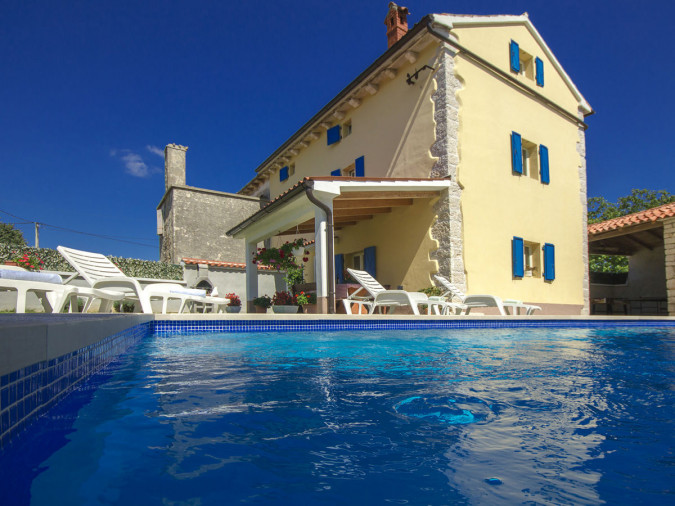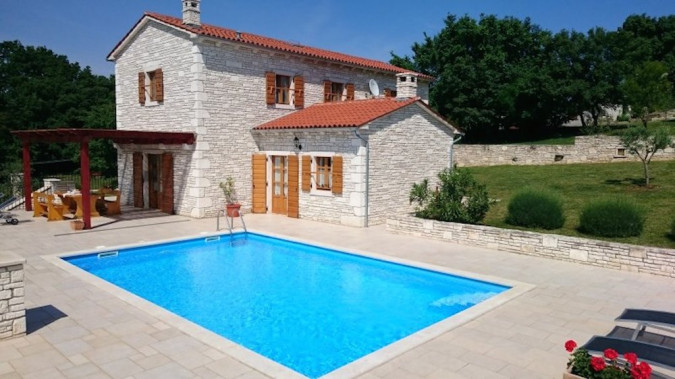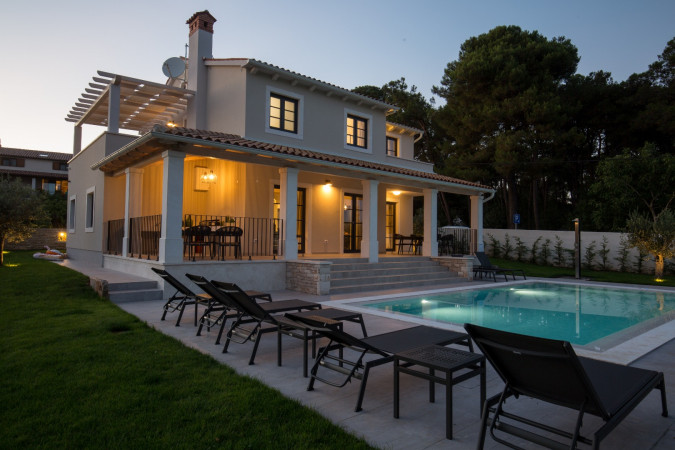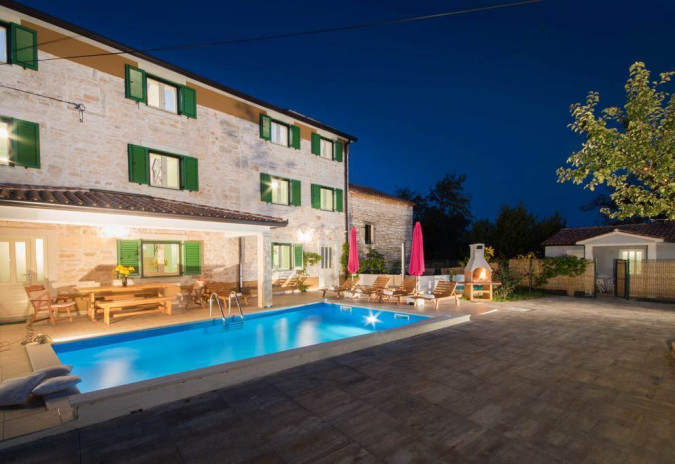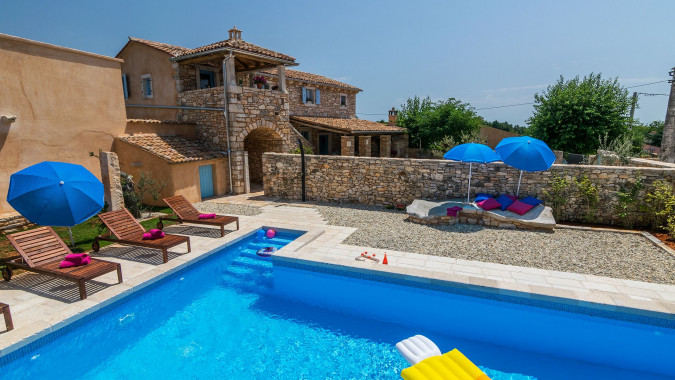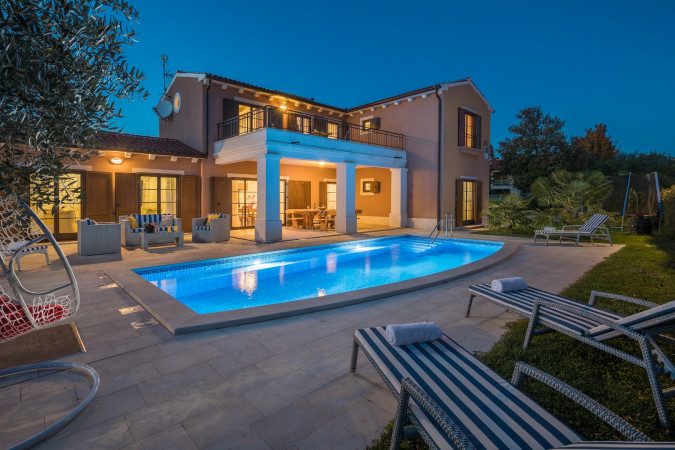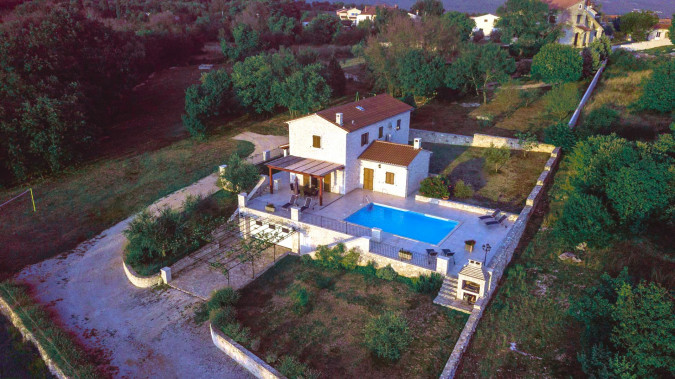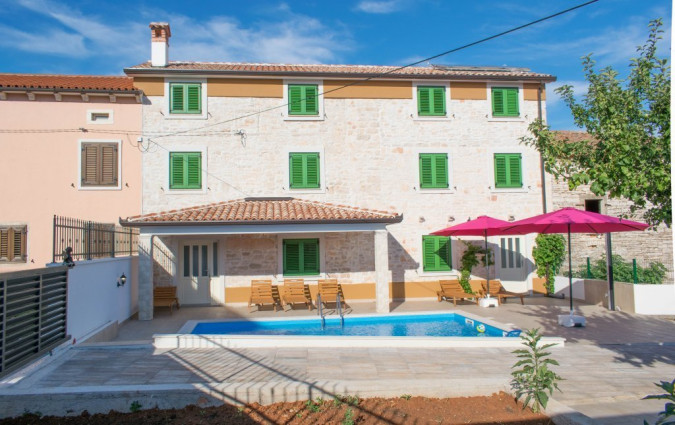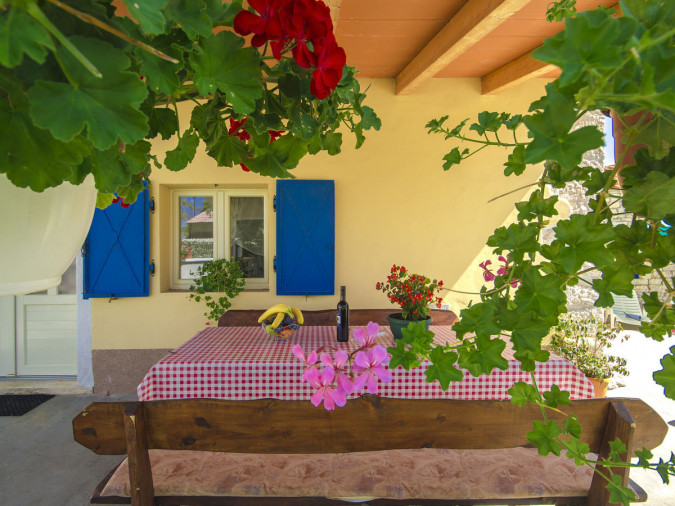Barban
Barban is a small historical village situated on the plateau separating the Labin from Pula-Pola area. Ancient Romans used to live in the prehistoric hill-fort.
Throughout history Barban had a strategical position dominating the high ground and controlling the valley and the bridge on the Raša river.Gradually, the village developed into the fortified castle with round and square towers, defensive walls and big and small town gates as well as the citadel. In 1535 it was bought from the counts of Pazin-Pisino by the Venetian noble family Loredans whose members, although living in Barban only temporary and represented by the captain, pulled it down and built the palace and the parish church of St. Nicholas.
In front of the big town gates there is a small stony church of St. Anthony the Monk from the 15th century which interior is covered with frescoes.The most renowned historical person of Barban is a canon Pietro Stancovich (1771-1852), the author of the book 'Biographies of distinguished Istrians' where he immortalized 478 Istrian leading figures.
Today Barban is well known for its knightly game Trka na prstenac (the race for the ring), the feast of wine and the fig festival.
Marčana
Marčana is a place situated North of Pula-Pola on the crossroads of Pula-Labin and Vodnjan-Krnica roads. It is the centre of the homonymous municipality.
The historical sources give evidence of the dense population and tempestuous history of these areas during the ancient times. Marčana was first mentioned in writing in 1243 in the act of Pula’s oath of loyalty to Venice. Specifically, Marčana was then a part of Pula-Pola area and afterwards in 1331 it came under the authority of the Republic of Venice. Since this area was affected by an outbreak of plague on several occasions during the 15th century, Marčana and its surroundings virtually lost all the inhabitants. During the next century previously mentioned the Republic of Venice is systematically being settled by the refugees running away from Greece and Dalmatia.
The centre of the place is dominated by the parish church of St. Peter and Paul from the 15th century with the bell-tower dating back to 1846. Marčana is also famous for the medieval church of St. Anthony of Padua widened in late 16th century and consecrated in 1709.The undiscovered and attractive coast of Marčana steeply plunges into the clean and deep Adriatic Sea.
This coastal area is dominated by green peninsulas and bays which coast offers a priceless view of the horizon bathing in the blue.
Žminj
If all the roads in Europe lead to Rome, then all the roads in Istria lead to Žminj, the centre of Istria and the old intersection.
On the sole cross-roads below the town there is Calvary from 1720. Žminj was the town of Pazin-Pisino County which was taken over by the Venetians only for a year in 1617. A smaller part of citadel, one of the four round towers, one fort wing, the outer part of fortification protecting the houses of commons and one well preserved public tank dating back to 1863 can be seen today from the 15th century city fortifications.
The centre of the city is dominated by a great Baroque three-arch parish church of St. Mihovil built in 1625 on the foundations of the previous 12th century parish church. There are also three small churches painted in frescoes in Žminj – the small church of Holy Trinity painted in 1471, the small church of St. Cross situated on the graveyard and the church of St. Anthony the Monk dating back to 1381. On the town entrance, there is a small church of St. Bartholomew around which a traditional feast Bartulja (the feast of St. Bartholomew) takes place on the last Saturday in August.
This is the biggest folk feast which Istrians and their guests never miss.







